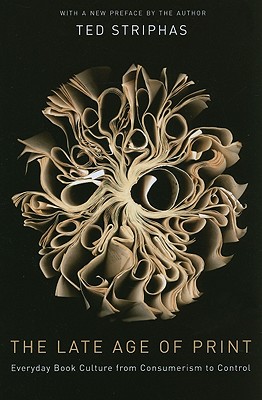What a difference a few years can make. I’m talking about the proliferation of e-reading devices among my Indiana University undergraduates — devices that were virtually non-existent in their lives not so very long ago. Let me explain.Бассейны. Сделать бассейн
In 2006, I piloted a course based loosely on The Late Age of Print called “The Cultures of Books and Reading.” We ended, predictably, with a unit on the future of books in an age of digital media. We read (among other things) a chapter or two from Sven Birkerts’ Gutenberg Elegies, in addition to Kevin Kelly’s provocative essay from The New York Times Magazine, “Scan This Book!” The materials provoked some intriguing thoughts and conversation, but it seemed to me as if something was missing; it was as though the future of books and reading wasn’t palpable yet, and so most everything we talked about seemed, well, a little ungrounded. Remember — this was about a year before the first Kindle landed, three years before the Barnes & Noble Nook, and a full four years before the release of the iPad. We’re talking ancient history in today’s technological terms.
When I taught the course two years later, things had changed — somewhat. There was genuine curiosity about e-reading, so much so that a group of students asked me to bring in my Kindle, hoping to take it for a test drive. I did, but didn’t realize that the battery had died. The demonstration ended up being a bust, and worse still, it was the last day of class. In other words, no do-overs. Still, that didn’t stop some of the students from writing papers about the possibilities e-readers held for them and their peers. While I appreciated the argument — and indeed, the earnestness — I ended up being a little disappointed by those papers. On the whole they were flatly celebratory. The lack of critical perspective was, I believe, a function of their having had little to no actual interaction with e-reading devices.
Now it’s 2011, and I’m teaching the course once again. Boy, have things changed! On day one I asked the group of 35 if any of them owned an e-reader. I expected to see maybe a few hands, since I’m aware of the reports stating that these devices have had more uptake among older users. Much to my surprise, around half the class raised their hands. We’re talking mostly 20 year-olds here. I had to know more. Some told me they owned a Kindle, others a Nook, and still others said they were iPad people who read using apps. In a couple of instances they owned more than one of these devices. They especially liked the convenience of not having to lug around a bag full of heavy books, not to mention the many public domain texts they could download at little or no cost.
There I was, standing in front of a group of students who also happened to be seasoned e-book readers. Because they’d self-selected into my class, I knew I needed to be mindful about the extent to which their interest in electronic reading could be considered representative of people their age. Even so, it was clear on day one that our conversations would be very different compared to those I’d had with previous cohorts in “The Cultures of Books and Reading.”
At the end of class a student approached me to ask about which version of Laura Miller’s Reluctant Capitalists: Bookselling and the Culture of Consumption, one of the required texts, he should buy. Old analog me assumed he was referring to cloth or paper, since I’d brought in my hardback copy but told the group I’d ordered paperbacks through the bookstore. My assumption was wrong. He told me that he wanted to purchase the Kindle edition but had some hesitations about doing so. How would he cite it, he asked? I said he should go ahead and acquire whichever version most suited him; the citations we could figure out.
A very different conversation indeed — one that I expect will become much more the norm by the time I teach “The Cultures of Books and Reading” the next time around. For now, though, here go the 36 of us, slouching our way into a moment in which analog and digital books commingle with one another. It reminds me a little of the first 100 years of printing in the West — the so-called “age of incunabula,” when manuscripts, printed editions, and hybrid forms all co-existed, albeit not so peaceably. I wonder if, at some point in the future, historians will begin referring to our time as the second age of incunabula.
 Follow
Follow







